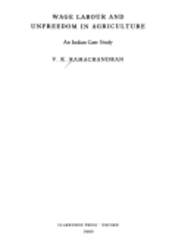Book
Wage Labour and Unfreedom in Agriculture
An Indian Case Study
This book addresses the question of how so much growth and technical change has occurred in Indian agriculture while the position of agricultural workers has remained relatively unchanged. Focusing on the employees, this study describes an area in Southern India which is known for agricultural development. The author discusses the increase in numbers and proportion of agricultural workers, the stagnation and marginal decline of wage rates and earnings, the property-less status of agricultural workers, consumption, and indebtedness. An original contribution to the study of markets and development studies, this work shows how limited the changes in agriculture are in India.
 Join the network
Join the network